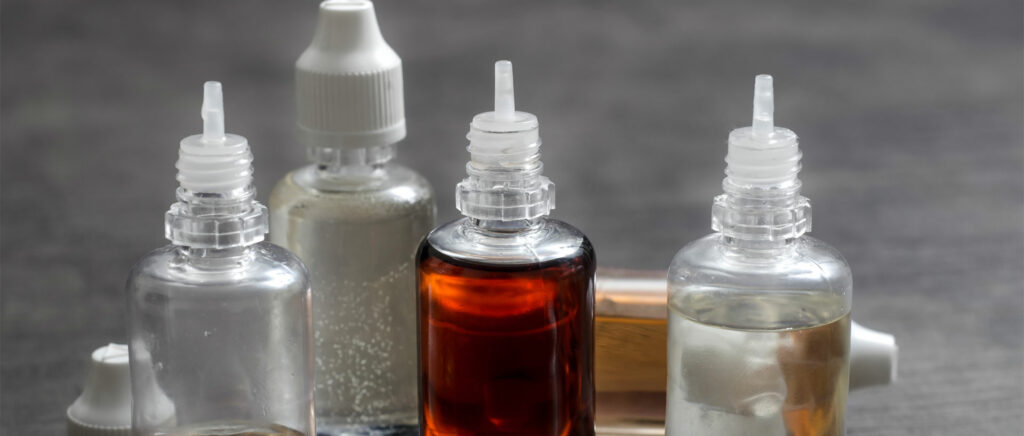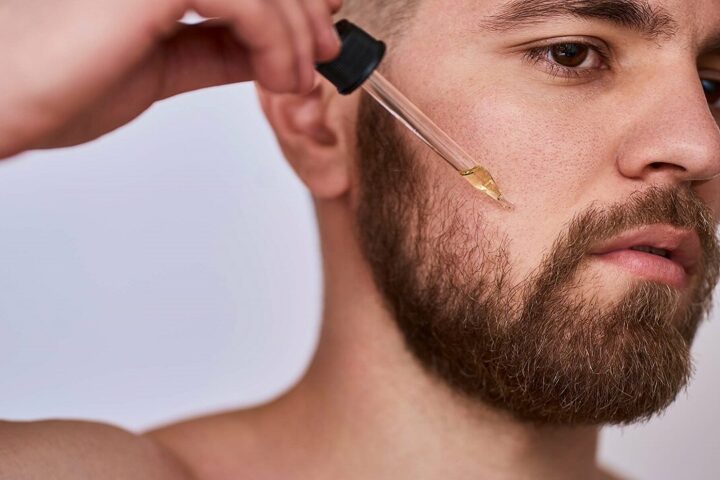Salt Nicotine E-Liquids
What is Salt Nicotine E-Liquids
Salt nicotine e-liquids are a type of e-liquid used in electronic cigarettes and vaping devices. They differ from traditional e-liquids in their composition, as they use a different type of nicotine that is smoother and more potent than the nicotine found in traditional e-liquids.
How are Salt Nicotine E-Liquids Different from Traditional E-Liquids?
Traditional e-liquids contain freebase nicotine, which is a highly alkaline form of nicotine that is harsh on the throat and can cause irritation when inhaled in large amounts. In contrast, salt nicotine e-liquids use nicotine salts, which are a more neutral and stable form of nicotine. This means that they are less harsh on the throat and can be used in higher concentrations without causing discomfort.
The key difference between nicotine salts and freebase nicotine is in the way they are absorbed by the body. Nicotine salts are absorbed more quickly and efficiently than freebase nicotine, which means that they provide a more satisfying nicotine hit with fewer puffs. This makes salt nicotine e-liquids a popular choice for people who are trying to quit smoking or who are looking for a more intense vaping experience.
Benefits of Salt Nicotine E-Liquids
There are several benefits to using salt nicotine e-liquids, including:
- More Efficient Nicotine Delivery: Salt nicotine e-liquids are absorbed more quickly and efficiently than traditional e-liquids, which means that they provide a more satisfying nicotine hit with fewer puffs.
- Less Harsh on the Throat: Because salt nicotine e-liquids use a more stable form of nicotine, they are less harsh on the throat and can be used in higher concentrations without causing irritation or discomfort.
- Smoother Vaping Experience: Salt nicotine e-liquids provide a smoother and more enjoyable vaping experience, with less harshness and throat hit.
How to Use Salt Nicotine E-Liquids
Salt nicotine e-liquids can be used in the same way as traditional e-liquids. They are typically used in refillable pod systems or other low-wattage devices that are designed for mouth-to-lung vaping. It’s important to note that salt nicotine e-liquids should not be used in high-wattage sub-ohm devices, as they can be too potent and can cause discomfort or irritation.
When using salt nicotine e-liquids, it’s important to start with a lower concentration of nicotine and gradually increase the concentration as needed. This will help you avoid any potential discomfort or nicotine overdose.
Conclusion
Salt nicotine e-liquids are a popular choice for vapers who are looking for a more efficient and satisfying nicotine hit. They are less harsh on the throat than traditional e-liquids and provide a smoother and more enjoyable vaping experience. When using salt nicotine e-liquids, it’s important to use them responsibly and to follow any local regulations regarding their use and sale.
How to Use Salt Nicotine E-Liquids
Using salt nicotine e-liquids is similar to using traditional e-liquids, but there are a few key differences to keep in mind. Here is a step-by-step guide on how to use salt nicotine e-liquids:
Choose the Right Device:
Salt nicotine e-liquids are best used in low-wattage devices, such as refillable pod systems, starter kits, or mouth-to-lung tanks. High-wattage sub-ohm devices are not recommended, as they can be too powerful and can cause discomfort or irritation.
Fill Your Tank:
If you are using a refillable pod system or tank, fill it with your salt nicotine e-liquid of choice. Make sure to follow the manufacturer’s instructions for filling and priming the coil.
Choose the Right Nicotine Strength:
Salt nicotine e-liquids come in a variety of nicotine strengths, ranging from 10mg/ml to 50mg/ml. It’s important to choose a nicotine strength that is appropriate for your needs and to start with a lower concentration if you are new to vaping.
Prime Your Coil:
Before using your device, it’s important to prime your coil by allowing the e-liquid to saturate the wick. This can be done by letting your device sit for a few minutes after filling it with e-liquid, or by taking a few dry hits without firing the device.
Take Slow Puffs:
Salt nicotine e-liquids are more potent than traditional e-liquids, so it’s important to take slow and steady puffs to avoid inhaling too much nicotine at once. Start with short puffs and gradually increase the length and intensity of your draws as needed.
Monitor Your Nicotine Intake:
Salt nicotine e-liquids are absorbed more quickly and efficiently than traditional e-liquids, so it’s important to monitor your nicotine intake and avoid taking too many puffs in a short period of time. If you feel lightheaded or experience any discomfort, stop using your device and take a break.
Store Your E-Liquid Properly:
Salt nicotine e-liquids should be stored in a cool, dry place and away from direct sunlight. Make sure to keep your e-liquid out of reach of children and pets.
In conclusion,
using salt nicotine e-liquids is simple and straightforward, but it’s important to use them responsibly and to follow any local regulations regarding their use and sale. By choosing the right device, nicotine strength, and taking slow puffs, you can enjoy a satisfying and enjoyable vaping experience with salt nicotine e-liquids.
What are the Benefits of Salt Nicotine E-Liquids
Salt nicotine e-liquids have become increasingly popular in recent years, and for good reason. Here are some of the main benefits of using salt nicotine e-liquids:
Faster Nicotine Delivery:
Salt nicotine e-liquids contain nicotine salts, which are absorbed more quickly and efficiently by the body than traditional e-liquids. This means that you can experience the effects of nicotine more quickly, making salt nicotine e-liquids a great choice for smokers who are trying to quit.
Smoother Vaping Experience:
Salt nicotine e-liquids are less harsh on the throat and lungs than traditional e-liquids, which can be a major advantage for vapers who are sensitive to the effects of nicotine. This makes salt nicotine e-liquids a great option for people who want to enjoy the benefits of vaping without the harshness of traditional e-liquids.
Higher Nicotine Concentrations:
Salt nicotine e-liquids can contain higher concentrations of nicotine than traditional e-liquids, which can be beneficial for heavy smokers who are trying to quit. With salt nicotine e-liquids, you can get the same amount of nicotine with fewer puffs, making it easier to control your nicotine intake and reduce cravings.
Longer Shelf Life:
Salt nicotine e-liquids have a longer shelf life than traditional e-liquids, thanks to the way that nicotine salts are formulated. This means that you can stock up on your favorite flavors and nicotine strengths without having to worry about them going bad before you have a chance to use them.
More Flavor Options:
Salt nicotine e-liquids come in a wide range of flavors and nicotine strengths, making it easy to find a flavor and nicotine strength that suits your individual preferences. Whether you prefer fruity, dessert, menthol, or tobacco flavors, there is a salt nicotine e-liquid out there that is perfect for you.
In conclusion,
salt nicotine e-liquids offer a number of benefits over traditional e-liquids, including faster nicotine delivery, a smoother vaping experience, higher nicotine concentrations, longer shelf life, and more flavor options. If you are looking for an alternative to traditional cigarettes or traditional e-liquids, salt nicotine e-liquids may be a great option for you to consider.
What to Look for when shopping for Salt Nicotine E-Liquids
If you are in the market for salt nicotine e-liquids, here are some key factors to consider when shopping:
Nicotine Strength:
Salt nicotine e-liquids come in a range of nicotine strengths, from low (around 5-10mg/mL) to high (50mg/mL or more). It is important to choose a nicotine strength that is appropriate for your needs, whether you are a heavy smoker trying to quit or a casual vaper looking for a mild nicotine hit.
Flavor:
Salt nicotine e-liquids come in a wide variety of flavors, from fruity to dessert to menthol and beyond. Choose a flavor that you enjoy and that you will be happy vaping on for an extended period of time.
PG/VG Ratio:
The ratio of propylene glycol (PG) to vegetable glycerin (VG) in the e-liquid can affect the flavor, throat hit, and vapor production. Higher PG ratios typically provide a stronger throat hit and more flavor, while higher VG ratios produce more vapor and a smoother hit.
Brand Reputation:
Choose a reputable brand that has a good track record of producing high-quality, safe e-liquids. Look for brands that use high-quality ingredients and have a history of providing accurate labeling and testing their products for safety and quality.
Price:
Salt nicotine e-liquids can vary in price, depending on the brand, flavor, and nicotine strength. While it can be tempting to choose the cheapest option, it is important to prioritize quality and safety over price.
Packaging:
Choose salt nicotine e-liquids that come in child-resistant packaging and are labeled with accurate nicotine strength and flavor information.
Reviews:
Read reviews from other vapers to get an idea of the flavor, nicotine strength, and overall quality of the e-liquid. This can help you make an informed decision before purchasing.
In conclusion,
when shopping for salt nicotine e-liquids, it is important to consider factors such as nicotine strength, flavor, PG/VG ratio, brand reputation, price, packaging, and reviews. By considering these factors, you can find a high-quality, safe salt nicotine e-liquid that meets your needs and preferences.
FAQs-Salt Nicotine E-Liquids
Is nicotine salt bad for vape?
Nicotine salt is not inherently bad for vaping, but it’s important to understand its effects and consider personal preferences. Nicotine salt is a different form of nicotine that is typically smoother and allows for higher nicotine concentrations without excessive throat hit. It is often used in pod systems or devices with low-power output. While nicotine salt can provide a more satisfying vaping experience for some users, it can also deliver nicotine more rapidly, which may increase the risk of nicotine dependence. Additionally, high nicotine concentrations can be harsh on the throat and potentially cause adverse effects if used excessively. As with any vaping product, it’s important to use nicotine salt responsibly, choose appropriate nicotine strengths, and consider one’s own tolerance and health factors. It’s advisable to consult with healthcare professionals or experienced vapers for personalized guidance and to stay informed about the latest research and recommendations regarding nicotine salt and vaping.
Is nicotine salt better than eliquid?
Whether nicotine salt is better than traditional e-liquid (freebase nicotine) depends on individual preferences and vaping habits. Nicotine salt is known for its smoothness and ability to deliver higher concentrations of nicotine without harsh throat hits. It is often favored by those who are transitioning from smoking to vaping or who require a stronger nicotine hit. On the other hand, traditional e-liquids offer a wider variety of flavors and nicotine strengths, making them suitable for different vaping preferences. Additionally, freebase nicotine is typically used in high-powered devices that produce larger vapor clouds. Ultimately, the choice between nicotine salt and e-liquid comes down to personal preference, desired nicotine levels, and the type of device being used. It’s advisable to try different options and consult with experienced vapers or professionals to find the best fit for your vaping needs.
How bad is salt nicotine for your lungs?
The impact of salt nicotine on lung health is a topic that is still being studied, and the long-term effects are not yet fully understood. However, compared to traditional freebase nicotine, salt nicotine is generally considered to be smoother and less harsh on the throat, making it more appealing for smokers transitioning to vaping. It’s important to note that any form of nicotine can be addictive and should be used responsibly. Nicotine itself is known to have potential risks and can have negative effects on cardiovascular health. Furthermore, vaping in general may carry certain respiratory risks due to the inhalation of aerosolized substances. If you have concerns about the impact of salt nicotine or vaping on your lung health, it is advisable to consult with healthcare professionals who can provide personalized advice based on your individual circumstances.
Is salt nicotine better than nicotine?
The preference between salt nicotine and traditional nicotine (freebase nicotine) depends on individual vaping habits and goals. Salt nicotine is known for its smoother throat hit and ability to deliver higher concentrations of nicotine without the need for high-power devices. It is often favored by those who are looking for a stronger nicotine hit or are transitioning from smoking to vaping. On the other hand, freebase nicotine is more widely available in various flavors and nicotine strengths, making it suitable for different vaping preferences. Ultimately, the choice between salt nicotine and freebase nicotine comes down to personal preference, desired nicotine levels, and the type of device being used. It’s important to use nicotine products responsibly and consider any potential health risks associated with nicotine use. If you have specific concerns or questions, it’s advisable to consult with healthcare professionals or experienced vapers for personalized advice.
How many cigarettes is 20 mg nicotine salt equal to?
It is challenging to directly equate the nicotine content in cigarettes to nicotine salt concentration, as the absorption and delivery methods differ between smoking and vaping. However, as a rough estimate, a 20 mg nicotine salt concentration is roughly equivalent to the nicotine content found in a pack of traditional cigarettes. It’s important to note that this is an approximation and individual nicotine tolerance and vaping habits can vary. Additionally, it’s crucial to use nicotine products responsibly and be mindful of potential risks associated with nicotine use. If you have concerns or questions about nicotine consumption, it’s advisable to consult with healthcare professionals or seek guidance from experienced vapers.
Are salt vapes worse than cigarettes?
Comparing the health risks of salt vapes (vaping with nicotine salt) and traditional cigarettes is complex. While vaping is generally considered to be less harmful than smoking, it’s important to note that both activities involve inhaling potentially harmful substances into the lungs. Salt vapes may deliver nicotine more efficiently and effectively than cigarettes, but they lack the harmful combustion process that produces many of the toxic byproducts found in cigarette smoke. However, vaping is not without risks, as it can still expose users to various chemicals, flavorings, and other additives present in e-liquids. The long-term effects of vaping are still being studied, and it is advisable to be cautious when using any nicotine-containing products. If you are considering vaping as an alternative to smoking, it is recommended to consult with healthcare professionals who can provide personalized advice based on your individual circumstances.
What is the healthiest form of nicotine?
When it comes to nicotine consumption, the healthiest approach is to avoid it altogether. Nicotine itself is addictive and can have potential risks, particularly for individuals with certain health conditions. However, if you are already a nicotine user and looking for a potentially less harmful option, nicotine replacement therapies (NRTs) like nicotine gum, patches, or lozenges are generally considered safer alternatives to smoking or vaping. These products deliver nicotine without the harmful chemicals and toxins associated with smoking or vaping. It’s important to use NRTs as directed and seek guidance from healthcare professionals to ensure safe and appropriate usage. Additionally, quitting nicotine altogether is the best way to improve overall health and reduce associated risks.
Is nicotine salt bad for your heart?
Nicotine salt, like other forms of nicotine, can potentially have effects on the cardiovascular system, including the heart. Nicotine is a vasoconstrictor, meaning it narrows blood vessels, which can increase blood pressure and strain on the heart. This can be a concern, especially for individuals with pre-existing heart conditions. However, the impact of nicotine salt on the heart may vary depending on factors such as dosage, frequency of use, individual sensitivity, and overall health. It is important to consider that vaping in general, regardless of the nicotine form, is still relatively new, and the long-term effects on cardiovascular health are not yet fully understood. If you have concerns about the impact of nicotine salt on your heart health, it is recommended to consult with healthcare professionals who can provide personalized advice based on your specific circumstances and medical history.
Will my lungs heal from vaping?
The extent to which your lungs can heal from the effects of vaping depends on several factors, including the duration and intensity of your vaping habit, as well as individual variations in lung health. While the long-term effects of vaping are still being studied, it is believed that quitting vaping can lead to improvements in lung function and overall respiratory health over time. The lungs have a remarkable ability to repair themselves to some extent, and quitting vaping allows them to gradually recover from the potential damage caused by inhaling aerosolized substances. However, it is important to note that the extent and speed of lung healing may vary from person to person. If you have concerns about your lung health, it is recommended to consult with healthcare professionals who can provide personalized advice and guidance based on your specific situation.
Is vaping worse for your lungs than smoking?
The impact of vaping on lung health compared to smoking is still a topic of ongoing research and scientific debate. While both vaping and smoking involve inhaling substances into the lungs, the composition of the inhaled aerosol differs significantly. Traditional cigarettes produce smoke through the combustion of tobacco, releasing numerous harmful chemicals and carcinogens. Vaping, on the other hand, involves heating e-liquids that usually contain nicotine, flavorings, and other additives, producing an aerosol. Although e-cigarette aerosols contain fewer toxicants than cigarette smoke, they are not without potential risks. Some studies suggest that vaping may have adverse effects on lung function and respiratory health, while others indicate that it could be a less harmful alternative for adult smokers. Nevertheless, the long-term effects of vaping are still not fully understood, and individuals concerned about their lung health are advised to consult healthcare professionals for the most accurate and up-to-date information.
Can a cardiologist tell if you vape?
A cardiologist, who specializes in heart health, may not be able to directly determine if a person vapes solely based on their cardiovascular examination. However, certain effects of vaping on the cardiovascular system can be observed during a thorough evaluation. For instance, vaping has been associated with an increased heart rate and blood pressure, which can be detected during a physical examination. Additionally, if a person has a history of vaping and presents with symptoms such as chest pain, shortness of breath, or irregular heart rhythms, a cardiologist may suspect the potential influence of vaping on their cardiovascular health. To confirm whether someone vapes or assess its specific impact on their health, a cardiologist may collaborate with other healthcare professionals, such as pulmonologists or toxicologists, to gather more comprehensive information and conduct appropriate tests.
Does vaping count as smoking?
Vaping and smoking are distinct activities with some similarities. While both involve inhaling substances into the lungs, they differ in terms of the products and methods used. Smoking typically refers to the act of burning tobacco and inhaling the resulting smoke, which contains numerous harmful chemicals and carcinogens. On the other hand, vaping involves heating e-liquids that usually contain nicotine, flavorings, and other additives, producing an aerosol that is then inhaled. Although vaping may mimic the physical act of smoking, it does not involve the combustion of tobacco and does not produce smoke. Therefore, while vaping may share some behavioral similarities with smoking, it is considered a separate activity with its own unique set of potential risks and health effects.
How long does it take for vape to get out of your system?
The exact timeframe for vaping substances to leave your system can vary depending on several factors, including the frequency and duration of use, the specific substances vaped, and individual metabolism. Nicotine, a common component in many e-liquids, has a half-life of around 2 hours, meaning it takes approximately 11 hours for it to be eliminated from your body. However, other components in vape aerosols, such as flavorings and additives, may have different elimination rates. It’s important to note that while the direct effects of vaping may dissipate relatively quickly, the potential long-term impacts on lung health and overall well-being may require more extensive time for recovery. If you have concerns about the presence of vaping substances in your system, it is recommended to consult with a healthcare professional who can provide personalized advice based on your specific situation.
What is considered a heavy vaper?
The term “heavy vaper” is subjective and can vary depending on the context. Generally, it refers to an individual who engages in frequent and prolonged vaping sessions, consuming a significant amount of e-liquid and potentially a higher dose of nicotine. However, the exact threshold for what constitutes a heavy vaper may differ among individuals and can depend on factors such as the intensity of vaping, the frequency of use, and the concentration of nicotine in the e-liquid. Some indicators of heavy vaping could include using vaping devices excessively throughout the day, experiencing nicotine cravings or withdrawal symptoms when not vaping, and having a high tolerance to nicotine. It is important to note that heavy vaping may carry potential health risks, and individuals who vape regularly and excessively should be mindful of the potential consequences and consider seeking guidance from healthcare professionals.
Can a doctor tell if you vape?
A doctor may be able to determine if a person vapes through various means, but it may not always be immediately evident. During a medical examination, certain signs or symptoms associated with vaping can be indicators. For instance, if a patient presents with respiratory issues such as coughing, shortness of breath, or lung abnormalities, and they disclose a history of vaping, it could lead the doctor to suspect vaping-related health problems. Additionally, physical examinations and diagnostic tests may reveal specific markers or abnormalities that are associated with vaping, such as increased heart rate, elevated blood pressure, or lung inflammation. However, direct evidence of vaping, such as detecting vaping devices or residue in the body, may not be readily detectable unless specifically tested for or disclosed by the patient. It’s essential for patients to provide accurate information about their vaping habits to their healthcare provider, as it can help guide diagnosis and appropriate treatment.
- Apple Gelato Weed Strain Information - May 2, 2024
- Sweet Tart Weed Strain Information - April 27, 2024
- Expert Guide to White Fire OG (WiFi OG) Weed Strain Information - April 20, 2024












